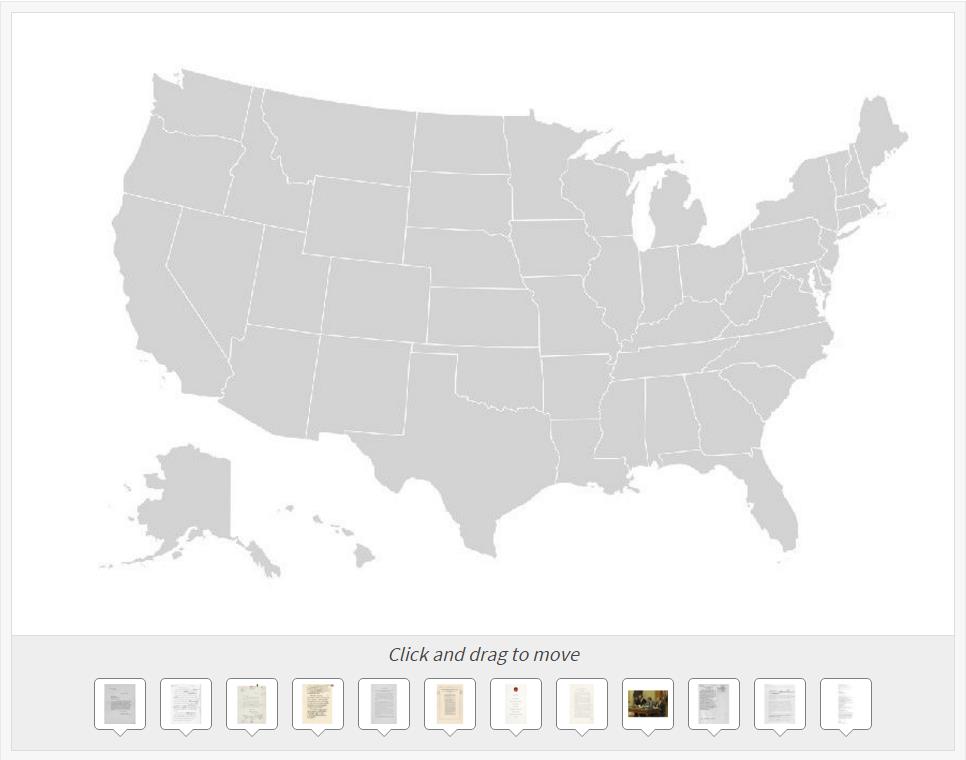In this activity, students will identify and analyze documents related to key presidential decisions. Through close examination of the documents, students will determine which president was involved. Students will then identify the Presidential Library associated with the documents on the map.
Suggested Teaching Instructions
Students will be able to define key vocabulary terms, analyze documents and identify the president with whom each document is connected, match presidents with the correct locations of their Presidential Libraries, recognize the historical event described or portrayed in each document, discover key similarities – and differences among – the presidents, and describe significant accomplishments of each president. For grades 6-12. Approximate time needed is 90 minutes.
You may choose to share with students that during his second term in office, President Franklin D. Roosevelt established a public repository to preserve the evidence of his presidency, including papers and other materials he and his staff had accumulated during his administrations. Roosevelt began a tradition when he established this – the first Presidential Library. President Herbert Hoover, though in office before President Roosevelt, followed suit by establishing his own Presidential Library. All presidents since can claim a Presidential Library in their name. These are overseen by the
Office of Presidential Libraries, in the National Archives and Records Administration.
Review with students some key events that happened during each President’s term(s) in office from Herbert Hoover to William Clinton (1928 to 2001), the presidents for whom permanent Presidential Libraries have been built. Focus on occurrences and major accomplishments of each during their administrations.
As a class, define key terms and concepts related to the presidency, such as:
Article II, Commander in Chief, impeachment, pardon, infamy, inauguration, resolution, treaty, eulogy, Cold War, accord, succession, foreign policy, oath of office, advice & consent, fireside chats, embargo, first lady, veto, and
legacy.
After discussing the term
legacy, ask students to consider which events and/or decisions each president was involved in or made that will forever be part of determining his legacy.
Open the activity and choose one document with which to model careful
document analysis. Answer:
- Who is involved?
- What is happening?
- When was this written?
- To where does the document refer/originate?
- Why was it written?
- And how did it happen?
Ask students to begin the activity in pairs, performing the same kind of analysis with each document before moving it to the map. Students should identify the president associated with each document, discover
where that president’s Library is located, and place the document in that location on the map. Remind students to pay close attention to those states that have more than one library for accuracy’s sake.
When students have finished the mapping activity, ask them to use the events described in the documents to make a list of key events from 1928 to the present. Compare these lists as a class. As a class, or as an individual assignment, ask students to construct a timeline and label these key events.
Finally, ask students to categorize the documents they saw according to domestic or foreign policy issues/events. Provide time to examine documents in order to debate this question: Which decisions are most difficult to make — domestic or foreign policy issues? Students should be prepared to defend their choices.





